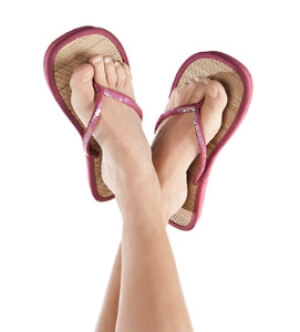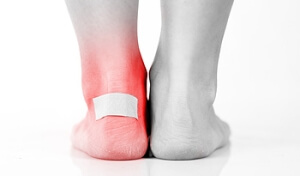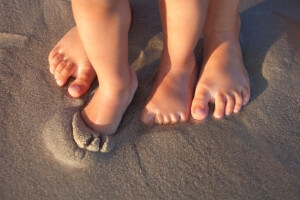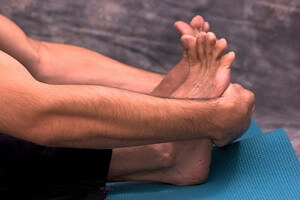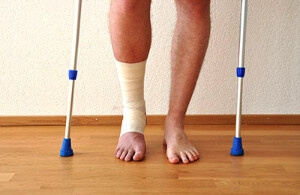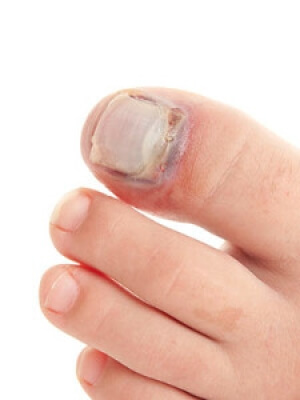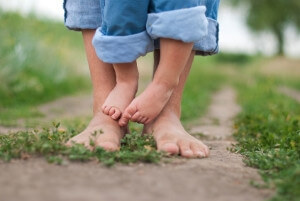Super User
Flip Flops and Foot Health
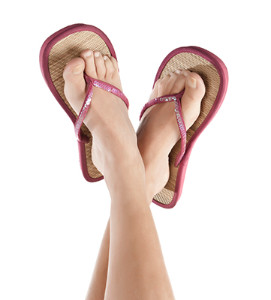 Many people enjoy the simplicity of wearing flip flops. They are easy to slip into, which makes them a desirable shoe to wear. Despite their popularity, research has indicated they can be harmful to the feet. The arch is typically absent in this type of shoe, which may cause pain in the feet and ankles. Additionally, flip flops lack shock absorption, and there is minimal cushioning in the heel area. Many people also have to curl their toes which helps to provide stability in these shoes, and this may change the way you walk. It is beneficial wear shoes that have a strap on the back, which aids in supporting the foot. If you would like additional information about how flip flops affect the feet, it is suggested that you consult with a podiatrist.
Many people enjoy the simplicity of wearing flip flops. They are easy to slip into, which makes them a desirable shoe to wear. Despite their popularity, research has indicated they can be harmful to the feet. The arch is typically absent in this type of shoe, which may cause pain in the feet and ankles. Additionally, flip flops lack shock absorption, and there is minimal cushioning in the heel area. Many people also have to curl their toes which helps to provide stability in these shoes, and this may change the way you walk. It is beneficial wear shoes that have a strap on the back, which aids in supporting the foot. If you would like additional information about how flip flops affect the feet, it is suggested that you consult with a podiatrist.
Flip-flops are not always the best choice of footwear. If you have any concerns about your feet or ankles, contact one of our podiatrists from New Tampa Foot & Ankle. Our doctors will assist you with all of your foot and ankle needs.
Flip-Flops and Feet
When the weather starts warming up, people enjoy wearing flip-flops. Flip-flops are comfortable, stylish, and easy to slip on and off; they're perfect for any summer beach goer. However, these shoes can cause harm to the feet.
How Can Flip-Flops Affect Me Long-Term?
- Ankle problems
- Hip problems
- Lower back problems
- Pain in the balls of the feet
- Problems with foot arches
- Changes in the way you walk
Are There Injuries Associated with Flip-Flops?
Yes. Since flip-flops are relatively weak and do not provide the same amount of support as sneakers, people who wear flip-flops regularly are more susceptible to injuries. On top of that, the open nature of the shoe makes your feet more prone to other problems, such as cuts and even infections. Common injuries and ailments include:
- Sprained ankles
- Blisters
- Infections
- Cuts and Scrapes
I like Wearing Flip-Flops. Are There Safe Alternatives?
When buying flip-flops, try to find ones that have sturdy soles and that are made of high-quality materials that will support for your feet. These flip-flops will cost more but will also last longer as a result.
If you have any questions please feel free to contact our office located in Wesley Chapel, FL . We offer the newest diagnostic and treatment technologies for all your foot and ankle needs.
Flipping Out About Flip Flops
Although it may be tempting to wear flip-flops in warm weather, they are not the best choice of footwear for your feet. Flip-flops may be ideal for the beach, pool, spa, and shared showers, but you should avoid wearing them unless it is completely necessary.
Flip-flops only have a small strip of fabric holding your foot in place, but your toes need a better grip to keep your foot in place. The repetitive gripping can lead to an overuse of your muscles, which could result in tendinitis. This is only one of the many problems that stem from wearing flip-flops too often.
Flip flops aren’t good for extensive walking because they fail to offer arch support, heel cushioning, or shock absorption. As a result, people who wear flip flops are at a higher risk of experiencing an ankle sprain. Additionally, these shoes offer little protection for your feet, putting those who wear them at a greater risk for stubbed toes, glass cuts, and puncture wounds.
Although flip flops aren’t recommended for everyday use by anyone, it is especially important for diabetics to avoid them. A diabetic foot injury can easily become very serious, and it may even lead to amputation.
If you are experiencing pain from wearing flip-flops, you shouldn’t be hesitant to replace them with a more comfortable shoe that offers more support. If your flip-flop foot pain doesn’t go away, you should seek assistance from a podiatrist right away. It is possible that you may have a more serious foot problem such as a stress fracture or arthritis.
What Is a Blister?
 A common cause of blisters is repetitive movement that happens from excessive running, walking, or cycling. They are described as small areas that are filled with a protective fluid. They develop as the body’s natural defense to skin that has become irritated and raw, and in most cases, will drain when new skin forms over the affected area. There are methods that can be implemented that may help to prevent blisters. These include having your feet measured so a proper shoe size can be determined. Additionally, it is beneficial to wear socks that pull moisture away from skin. Many patients find it is helpful to use a powder on the feet, as this can absorb excess moisture. If you have a blister on your foot, and would like information about how to treat it, it is advised that you consult with a podiatrist.
A common cause of blisters is repetitive movement that happens from excessive running, walking, or cycling. They are described as small areas that are filled with a protective fluid. They develop as the body’s natural defense to skin that has become irritated and raw, and in most cases, will drain when new skin forms over the affected area. There are methods that can be implemented that may help to prevent blisters. These include having your feet measured so a proper shoe size can be determined. Additionally, it is beneficial to wear socks that pull moisture away from skin. Many patients find it is helpful to use a powder on the feet, as this can absorb excess moisture. If you have a blister on your foot, and would like information about how to treat it, it is advised that you consult with a podiatrist.
Blisters may appear as a single bubble or in a cluster. They can cause a lot of pain and may be filled with pus, blood, or watery serum. If your feet are hurting, contact one of our podiatrists of New Tampa Foot & Ankle. Our doctors can provide the care you need to keep you pain-free and on your feet.
Foot Blisters
Foot blisters are often the result of friction. This happens due to the constant rubbing from shoes, which can lead to pain.
What Are Foot Blisters?
A foot blister is a small fluid-filled pocket that forms on the upper-most layer of the skin. Blisters are filled with clear fluid and can lead to blood drainage or pus if the area becomes infected.
Symptoms
(Blister symptoms may vary depending on what is causing them)
- Bubble of skin filled with fluid
- Redness
- Moderate to severe pain
- Itching
Prevention & Treatment
In order to prevent blisters, you should be sure to wear comfortable shoes with socks that cushion your feet and absorb sweat. Breaking a blister open may increase your chances of developing an infection. However, if your blister breaks, you should wash the area with soap and water immediately and then apply a bandage to the affected area. If your blisters cause severe pain it is important that you call your podiatrist right away.
If you have any questions, please feel free to contact our office located in Wesley Chapel, FL . We offer the newest diagnostic and treatment technologies for all your foot care needs.
Who Is at Risk for Sesamoiditis?
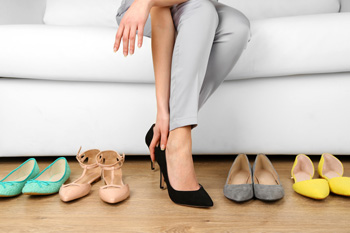 Sesamoiditis is a condition that affects the sesamoid bones, which can be found below the joint of the big toe. If you are a dancer or jogger, you may find that you experience pain in this area. You may also be susceptible to this condition if you have high arches, wear high heels, or have bunions. Symptoms to look out for are redness, swelling and warmth near the joint of the big toe. The level of pain may change depending on how supportive your shoe is. A podiatrist will be able to determine if you have sesamoiditis. There are a few treatment options for this ailment. First, you should find new, thick-soled shoes. Additionally, you can find orthotics that decrease the pressure surrounding the sesamoid bones. If you think you may have sesamoiditis, it is recommended that you contact a podiatrist in order to discuss an effective treatment plan.
Sesamoiditis is a condition that affects the sesamoid bones, which can be found below the joint of the big toe. If you are a dancer or jogger, you may find that you experience pain in this area. You may also be susceptible to this condition if you have high arches, wear high heels, or have bunions. Symptoms to look out for are redness, swelling and warmth near the joint of the big toe. The level of pain may change depending on how supportive your shoe is. A podiatrist will be able to determine if you have sesamoiditis. There are a few treatment options for this ailment. First, you should find new, thick-soled shoes. Additionally, you can find orthotics that decrease the pressure surrounding the sesamoid bones. If you think you may have sesamoiditis, it is recommended that you contact a podiatrist in order to discuss an effective treatment plan.
Sesamoiditis is an unpleasant foot condition characterized by pain in the balls of the feet. If you think you’re struggling with sesamoiditis, contact one of our podiatrists of New Tampa Foot & Ankle. Our doctors will treat your condition thoroughly and effectively.
Sesamoiditis
Sesamoiditis is a condition of the foot that affects the ball of the foot. It is more common in younger people than it is in older people. It can also occur with people who have begun a new exercise program, since their bodies are adjusting to the new physical regimen. Pain may also be caused by the inflammation of tendons surrounding the bones. It is important to seek treatment in its early stages because if you ignore the pain, this condition can lead to more serious problems such as severe irritation and bone fractures.
Causes of Sesamoiditis
- Sudden increase in activity
- Increase in physically strenuous movement without a proper warm up or build up
- Foot structure: those who have smaller, bonier feet or those with a high arch may be more susceptible
Treatment for sesamoiditis is non-invasive and simple. Doctors may recommend a strict rest period where the patient forgoes most physical activity. This will help give the patient time to heal their feet through limited activity. For serious cases, it is best to speak with your doctor to determine a treatment option that will help your specific needs.
If you have any questions please feel free to contact our office located in Wesley Chapel, FL . We offer the newest diagnostic and treatment technologies for all your foot and ankle needs.
Most Babies Are Born with Flat Feet
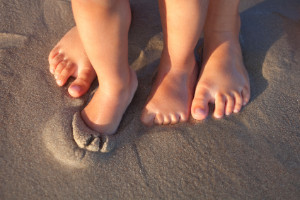 Babies feet are soft and flexible, and this is a result of bones that have not fully developed. Research has indicated the importance of wearing shoes and socks that fit correctly, and this can help in preventing uncomfortable foot conditions. It is beneficial that children walk barefoot while indoors, and this aids in strengthening the toes which help to provide the grasping motion. It is important to measure children's feet approximately every other month until the age of three. This will ensure the correct size shoes are worn for their rapidly growing feet. Most babies are born with flat feet, and the arch will fully develop by seven years old. If you notice your child is walking with their feet pointed inward or outward, it is advised that you seek the counsel of a podiatrist who can properly examine your child’s feet.
Babies feet are soft and flexible, and this is a result of bones that have not fully developed. Research has indicated the importance of wearing shoes and socks that fit correctly, and this can help in preventing uncomfortable foot conditions. It is beneficial that children walk barefoot while indoors, and this aids in strengthening the toes which help to provide the grasping motion. It is important to measure children's feet approximately every other month until the age of three. This will ensure the correct size shoes are worn for their rapidly growing feet. Most babies are born with flat feet, and the arch will fully develop by seven years old. If you notice your child is walking with their feet pointed inward or outward, it is advised that you seek the counsel of a podiatrist who can properly examine your child’s feet.
The health of a child’s feet is vital to their overall well-being. If you have any questions regarding foot health, contact one of our podiatrists of New Tampa Foot & Ankle. Our doctors can provide the care you need to keep you pain-free and on your feet.
Tips for Keeping Children's Feet Healthy
- Make sure their shoes fit properly
- Look for any signs of in-toeing or out-toeing
- Check to see if they have Clubfoot (condition that affects your child’s foot and ankle, twisting the heel and toes inward) which is one of the most common nonmajor birth defects.
- Lightly cover your baby’s feet (Tight covers may keep your baby from moving their feet freely, and could prevent normal development)
- Allow your toddler to go shoeless (Shoes can be restricting for a young child’s foot)
- Cut toenails straight across to avoid ingrown toenails
- Keep your child’s foot clean and dry
- Cover cuts and scrapes. Wash any scratches with soap and water and cover them with a bandage until they’ve healed.
If you have any questions, please feel free to contact our office located in Wesley Chapel, FL . We offer the newest diagnostic and treatment technologies for all your foot care needs.
Simple Foot Stretches
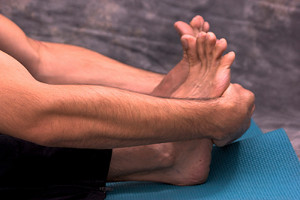 The feet bear the weight of the body throughout the day, and it is important to properly take care of them. This includes practicing frequent foot stretches which may reduce common aches and pains in the feet. An effective stretch for the arch is done by rolling your foot on a tennis ball, and this is helpful in relaxing the muscles. The toes can be strengthened by standing on tiptoes for several seconds, followed by standing flat on the ground. The toes will feel refreshed when this stretching technique is repeated a few times. An additional stretch for the toes is accomplished by interlocking your fingers through your toes while gently rolling the ankle in circles. This is beneficial in strengthening the joints in the ankle. If you would like additional information about how stretching can benefit the feet, please consult with a podiatrist.
The feet bear the weight of the body throughout the day, and it is important to properly take care of them. This includes practicing frequent foot stretches which may reduce common aches and pains in the feet. An effective stretch for the arch is done by rolling your foot on a tennis ball, and this is helpful in relaxing the muscles. The toes can be strengthened by standing on tiptoes for several seconds, followed by standing flat on the ground. The toes will feel refreshed when this stretching technique is repeated a few times. An additional stretch for the toes is accomplished by interlocking your fingers through your toes while gently rolling the ankle in circles. This is beneficial in strengthening the joints in the ankle. If you would like additional information about how stretching can benefit the feet, please consult with a podiatrist.
Stretching the feet is a great way to prevent injuries. If you have any concerns with your feet consult with one of our podiatrists from New Tampa Foot & Ankle. Our doctors will assess your condition and provide you with quality foot and ankle treatment.
Stretching the Feet
Being the backbone of the body, the feet carry your entire weight and can easily become overexerted, causing cramps and pain. As with any body part, stretching your feet can serve many benefits. From increasing flexibility to even providing some pain relief, be sure to give your feet a stretch from time to time. This is especially important for athletes or anyone performing aerobic exercises, but anyone experiencing foot pain or is on their feet constantly should also engage in this practice.
Great ways to stretch your feet:
- Crossing one leg over the others and carefully pull your toes back. Do 10-20 repetitions and repeat the process for each foot
- Face a wall with your arms out and hands flat against the wall. Step back with one foot and keep it flat on the floor while moving the other leg forward. Lean towards the wall until you feel a stretch. Hold for 30 seconds and perform 10 repetitions for each foot
- Be sure not to overextend or push your limbs too hard or you could risk pulling or straining your muscle
Individuals who tend to their feet by regular stretching every day should be able to minimize foot pain and prevent new problems from arising.
If you have any questions, please feel free to contact our office located in Wesley Chapel, FL . We offer the newest diagnostic and treatment technologies for all your foot care needs.
Healing Time Frame for Stress Fractures
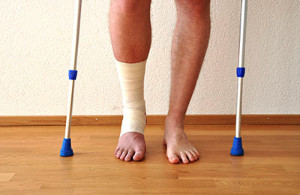 Stress fractures are tiny cracks in the bones of the feet. They occur as a result of participating in activities that cause the bones in the foot to weaken and crack faster than the healing process can begin. This can occur due to several reasons, including training in your chosen sport before adequate healing has been completed, increasing the amount of time training in a short period of time, or running on different surfaces. The symptoms that are associated with stress fractures often include swelling, burning pain, and difficulty walking on the affected foot. Effective treatment begins with staying off the foot for several weeks, depending on the severity of the injury. This can be accomplished by wearing a cast. If you have sustained a stress fracture, speak to a podiatrist who can guide you toward proper treatment options.
Stress fractures are tiny cracks in the bones of the feet. They occur as a result of participating in activities that cause the bones in the foot to weaken and crack faster than the healing process can begin. This can occur due to several reasons, including training in your chosen sport before adequate healing has been completed, increasing the amount of time training in a short period of time, or running on different surfaces. The symptoms that are associated with stress fractures often include swelling, burning pain, and difficulty walking on the affected foot. Effective treatment begins with staying off the foot for several weeks, depending on the severity of the injury. This can be accomplished by wearing a cast. If you have sustained a stress fracture, speak to a podiatrist who can guide you toward proper treatment options.
Stress fractures occur when there is a tiny crack within a bone. To learn more, contact one of our podiatrists from New Tampa Foot & Ankle. Our doctors can provide the care you need to keep you pain free and on your feet.
How Are They Caused?
Stress fractures are the result of repetitive force being placed on the bone. Since the lower leg and feet often carry most of the body’s weight, stress fractures are likely to occur in these areas. If you rush into a new exercise, you are more likely to develop a stress fracture since you are starting too much, too soon. Pain resulting from stress fractures may go unnoticed at first, however it may start to worsen over time.
Risk Factors
- Gender – They are more commonly found in women compared to men.
- Foot Problems – People with unusual arches in their feet are more likely to develop stress fractures.
- Certain Sports – Dancers, gymnasts, tennis players, runners, and basketball players are more likely to develop stress fractures.
- Lack of Nutrients – A lack of vitamin D and calcium may weaken the bones and make you more prone to stress fractures
- Weak Bones – Osteoporosis can weaken the bones therefore resulting in stress fractures
Stress fractures do not always heal properly, so it is important that you seek help from a podiatrist if you suspect you may have one. Ignoring your stress fracture may cause it to worsen, and you may develop chronic pain as well as additional fractures.
If you have any questions, please feel free to contact our office located in Wesley Chapel, FL . We offer the newest diagnostic and treatment technologies for all your foot care needs.
Possible Treatment of a Broken Toe
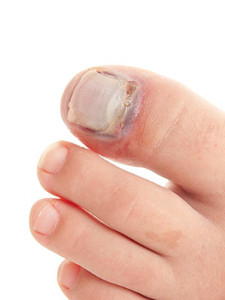 Broken toes can happen for a variety of reasons. These include severely stubbed toes, enduring a stress fracture, or if a heavy object has been dropped on it. The noticeable symptoms often consist of sudden pain, swelling, and the affected toe may look crooked. Additionally, it may be difficult to walk normally, and wearing shoes may be uncomfortable. The toe may feel better when the foot is elevated, and this may help to reduce any existing swelling. Many toe fractures can be treated by taping the toe to the one next to it. This is referred to as buddy taping. If you experience any tingling or have an open wound on the toe, it is advised to counsel with a podiatrist who can properly treat broken toes.
Broken toes can happen for a variety of reasons. These include severely stubbed toes, enduring a stress fracture, or if a heavy object has been dropped on it. The noticeable symptoms often consist of sudden pain, swelling, and the affected toe may look crooked. Additionally, it may be difficult to walk normally, and wearing shoes may be uncomfortable. The toe may feel better when the foot is elevated, and this may help to reduce any existing swelling. Many toe fractures can be treated by taping the toe to the one next to it. This is referred to as buddy taping. If you experience any tingling or have an open wound on the toe, it is advised to counsel with a podiatrist who can properly treat broken toes.
Broken toes may cause a lot of pain and should be treated as soon as possible. If you have any concerns about your feet, contact one of our podiatrists from New Tampa Foot & Ankle. Our doctors will treat your foot and ankle needs.
What Is a Broken Toe?
A broken toe occurs when one or more of the toe bones of the foot are broken after an injury. Injuries such as stubbing your toe or dropping a heavy object on it may cause a toe fracture.
Symptoms of a Broken Toe
- Swelling
- Pain (with/without wearing shoes)
- Stiffness
- Nail Injury
Although the injured toe should be monitored daily, it is especially important to have a podiatrist look at your toe if you have severe symptoms. Some of these symptoms include worsening or new pain that is not relieved with medication, sores, redness, or open wounds near the toe.
If you have any questions, please feel free to contact our office located in Wesley Chapel, FL . We offer the newest diagnostic and treatment technologies for all your foot care needs.
Preventing Falls at Home
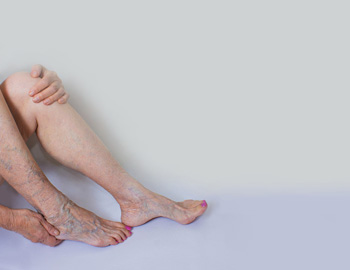 Falling is something that becomes scarier and riskier as we age. Falls can easily lead to larger complications that affect one’s everyday life. Precautions should be taken to help prevent falls and give someone who fears falling more confidence in themselves. Physical activity is important in reducing the risk of falling by improving balance, flexibility, muscle strength and gait. Gentle exercises are recommended, but if you don’t feel safe exercising alone, then monitored exercise programs could be helpful. Sturdy shoes that fit correctly are also necessary, so avoid heels, loose slippers, and shoes with slick soles. Also make sure that your space is brightly lit and that there are no hazards laying around. Examples of hazards are boxes, electrical cords, loose rugs, and anything that is in the way in a high traffic area. If you would like to learn more about preventing falls, then it is suggested you speak with a podiatrist.
Falling is something that becomes scarier and riskier as we age. Falls can easily lead to larger complications that affect one’s everyday life. Precautions should be taken to help prevent falls and give someone who fears falling more confidence in themselves. Physical activity is important in reducing the risk of falling by improving balance, flexibility, muscle strength and gait. Gentle exercises are recommended, but if you don’t feel safe exercising alone, then monitored exercise programs could be helpful. Sturdy shoes that fit correctly are also necessary, so avoid heels, loose slippers, and shoes with slick soles. Also make sure that your space is brightly lit and that there are no hazards laying around. Examples of hazards are boxes, electrical cords, loose rugs, and anything that is in the way in a high traffic area. If you would like to learn more about preventing falls, then it is suggested you speak with a podiatrist.
Preventing falls among the elderly is very important. If you are older and have fallen or fear that you are prone to falling, consult with one of our podiatrists from New Tampa Foot & Ankle. Our doctors will assess your condition and provide you with quality advice and care.
Every 11 seconds, an elderly American is being treated in an emergency room for a fall related injury. Falls are the leading cause of head and hip injuries for those 65 and older. Due to decreases in strength, balance, senses, and lack of awareness, elderly persons are very susceptible to falling. Thankfully, there are a number of things older persons can do to prevent falls.
How to Prevent Falls
Some effective methods that older persons can do to prevent falls include:
- Enrolling in strength and balance exercise program to increase balance and strength
- Periodically having your sight and hearing checked
- Discuss any medications you have with a doctor to see if it increases the risk of falling
- Clearing the house of falling hazards and installing devices like grab bars and railings
- Utilizing a walker or cane
- Wearing shoes that provide good support and cushioning
- Talking to family members about falling and increasing awareness
Falling can be a traumatic and embarrassing experience for elderly persons; this can make them less willing to leave the house, and less willing to talk to someone about their fears of falling. Doing such things, however, will increase the likelihood of tripping or losing one’s balance. Knowing the causes of falling and how to prevent them is the best way to mitigate the risk of serious injury.
If you have any questions, please feel free to contact our office located in Wesley Chapel, FL . We offer the newest diagnostic and treatment technologies for all your foot care needs.
Should Young Children Walk Barefoot?
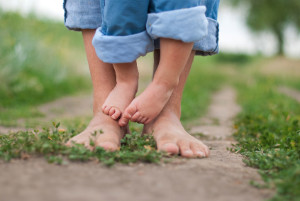 Research has shown that it may not be necessary for young toddlers to wear shoes while they are walking indoors. When they are able to walk barefoot, their toes will naturally develop a grasping action, which may help the feet to grow normally. When shoes are eventually purchased, it is important to properly measure your child’s foot to determine the correct shoe size. This should be done every four months for children under the age of five, and every six months for older children. Many babies are born with flat feet and may remain that way until the arch develops at approximately six years of age. If you notice abnormal walking patterns in your child, it is advised to speak to a podiatrist who can guide you toward foot care that is right for your child.
Research has shown that it may not be necessary for young toddlers to wear shoes while they are walking indoors. When they are able to walk barefoot, their toes will naturally develop a grasping action, which may help the feet to grow normally. When shoes are eventually purchased, it is important to properly measure your child’s foot to determine the correct shoe size. This should be done every four months for children under the age of five, and every six months for older children. Many babies are born with flat feet and may remain that way until the arch develops at approximately six years of age. If you notice abnormal walking patterns in your child, it is advised to speak to a podiatrist who can guide you toward foot care that is right for your child.
Making sure that your children maintain good foot health is very important as they grow. If you have any questions, contact one of our podiatrists of New Tampa Foot & Ankle. Our doctors can provide the care you need to keep you pain-free and on your feet.
Keeping Children's Feet Healthy
Having healthy feet during childhood can help prevent medical problems later in life, namely in the back and legs. As children grow, their feet require different types of care. Here are some things to consider...
Although babies do not walk yet, it is still very important to take care of their feet.
Avoid putting tight shoes or socks on his or her feet.
Allow the baby to stretch and kick his or her feet to feel comfortable.
As a toddler, kids are now on the move and begin to develop differently. At this age, toddlers are getting a feel for walking, so don’t be alarmed if your toddler is unsteady or ‘walks funny’.
As your child gets older, it is important to teach them how to take care of their feet.
Show them proper hygiene to prevent infections such as fungus.
Be watchful for any pain or injury.
Have all injuries checked by a doctor as soon as possible.
Comfortable, protective shoes should always be worn, especially at play.
If you have any questions please feel free to contact our office located in Wesley Chapel, FL . We offer the newest diagnostic and treatment technologies for all your foot and ankle needs.
